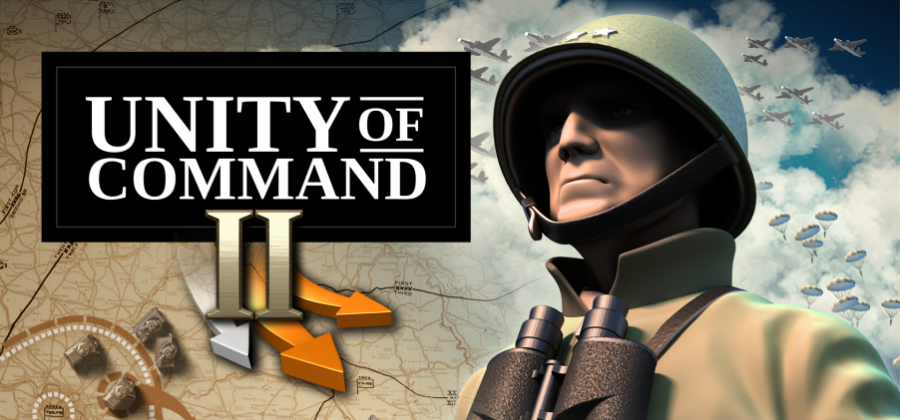Are you Patton or just a patsy? Take the ultimate test of your strategy skills in Unity Of Command II
Genre: Simulation, Strategy
Developer: 2×2 Games, Croteam
Publisher: 2×2 Games
Franchise: Unity of Command
Release Date: 12 Nov, 2019


Built on a brand new bespoke 3D engine, the game retains Unity of Command’s signature art style and delivers highly polished fluid gameplay. Easily accessible yet hard to master, Unity of Command II is the highly anticipated sequel to the cult classic that’s been turning novice players into battle-hardened grognards since 2011.
Unity of Command II lets you take command of Western Allies during the Second World War. You will manage your army’s divisions as well as their supply and logistics. For the first time in Unity of Command, you will face Fog of War. Reveal the unknown by capturing enemy soldiers and launching recon to gather intel on enemy troop positions. Enemy panzers will seek to capture your units’ stragglers — regroup and strike back!
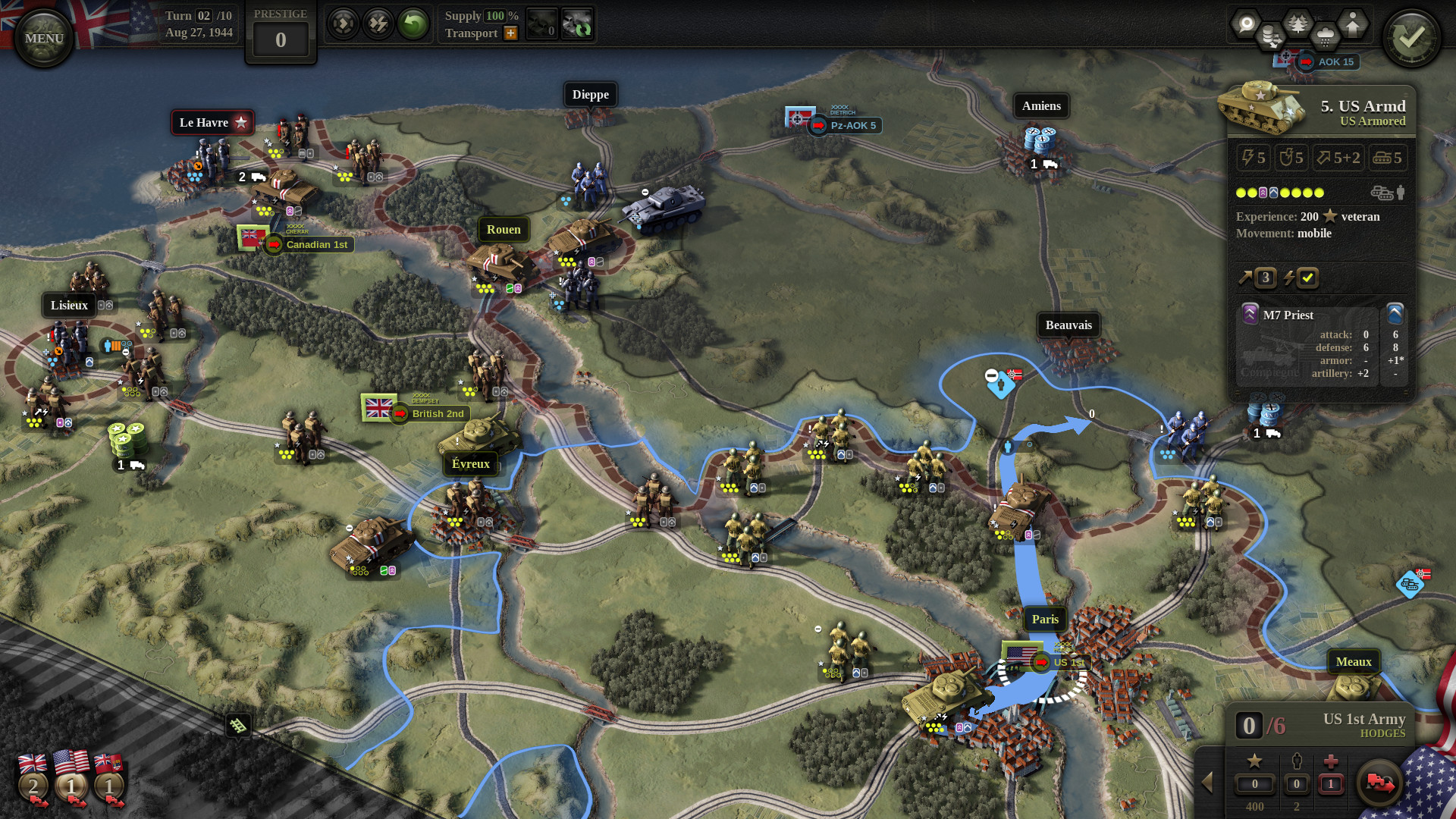
Introduction.
I played the original Unity of Command way back in 2011. I was instantly drawn to the game by its beautiful clean presentation. This was not merely graphical fluff. Underneath this glossy sheen lay a beast of a wargame. This was the first tactical wargame that introduced me to logistics and how, if poorly managed can be the undoing of any army regardless of size or technical ability. I have to admit it was a steep learning curve. My first few skirmishes ended in disaster as I overstretch my resources, leaving my front line troops isolated and exposed. Once I got my head around this new gameplay system I found a deeply rewarding experience which challenged my inner armchair general.
Fast forward 8 long years and the sequel is upon us. Replete with a brand spanking new bespoke 3D engine. The unfussy design aesthetic remains and now looks even better. The theatre of action has shifted from the snowy steppes of the Russian front to the bitter fighting in North Africa. Further campaigns focus on the Italian battles and beyond, as allies attempt to punch at the underbelly of the Axis powers.
“God created war so that Americans would learn geography.”
― Mark Twain
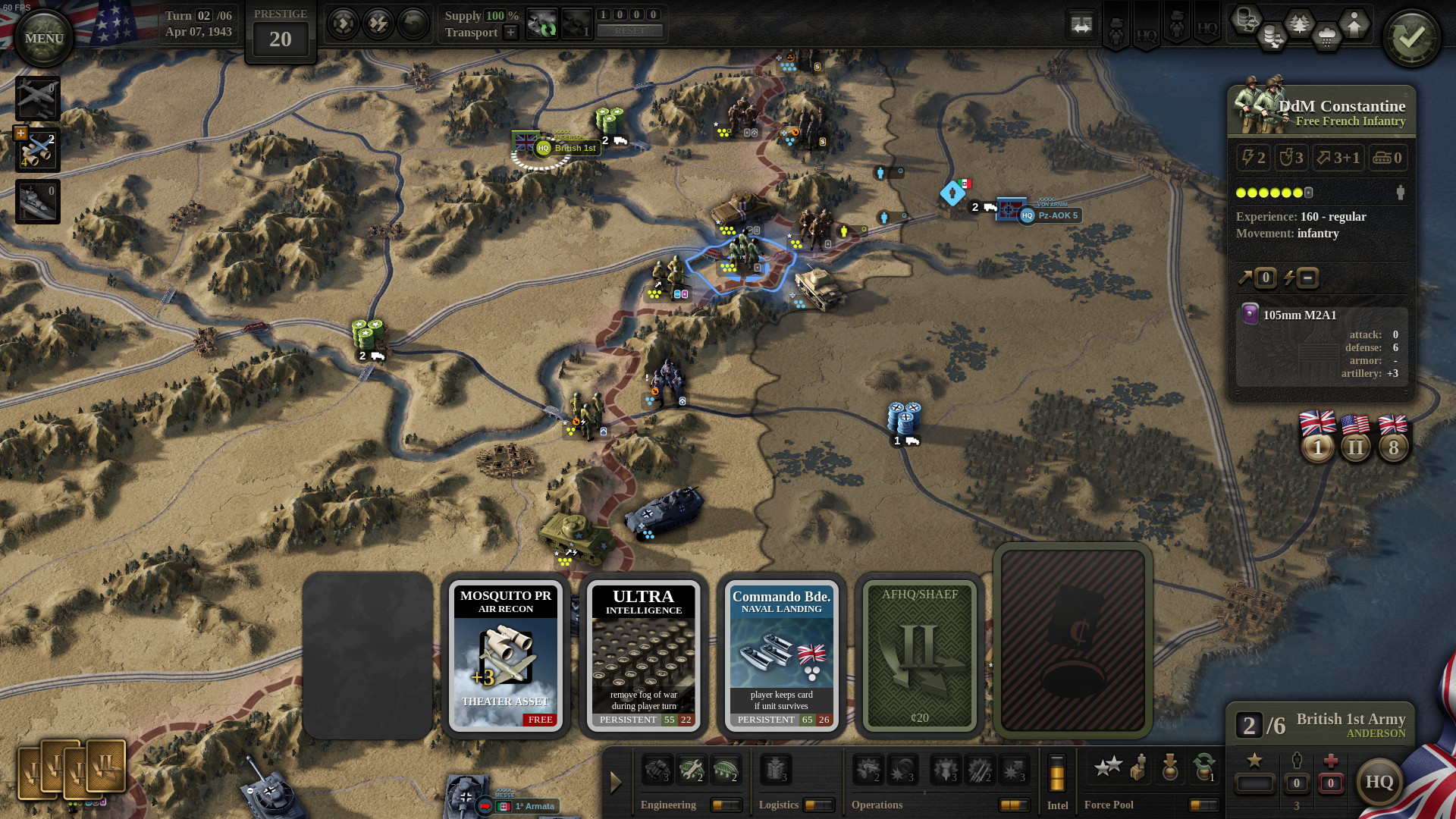
Any army that does not have functioning logistics is bound to fail. Didn’t napoleon once say “An army marches on its stomach”? Well, UOC takes this theory and runs with it. Most turn-based games I’ve played involving military campaigns rarely involve the player in supply lines and ordinance, beyond ammunition amounts that somehow magically appear at the battlefront. This key facet of a well-oiled fighting force is embedded into the DNA of this game.
A dynamic campaign was a heralded feature point in the press blurb. I initially thought this was just some marketing spiel but it turns out to be true. One of the opening missions in the main campaign is the amphibious assault on Sicily. Whilst trying out several tactics and replaying the opening moves, I found no two gameplay sessions were the same. Due to the game’s excellent use of fog of war and how you gather intel. I used spotter planes to determine where the enemy forces were situated. This is key to a successful beach landing where breaking out into the hinterland as quickly as possible is vital. I didn’t want this mission to turn into another Gallipoli. I tried various combinations of troops and movement strategies to get off the coastline. Every new session my forces were met by different enemy units and different tactics. On one particular sequence, I got a little ahead of myself and marches into the countryside without protecting one of my supple nodes adequately. The A.I. immediately saw my mistake and pounced on it. A nippy half-track division dashes through the gap and seized my control point. Cutting off my front line troops’ logistical lifeline. I leaned back in my chair and much like witnessing a good opponent’s chess move uttered “well played good sir, well played”.

“The true soldier fights not because he hates what is in front of him, but because he loves what is behind him.”
― G.K. Chesterton
Supreme command plays a great part in every conflict. UOC2 introduces the headquarters tab which acts as the overarching center of operations. These are the decision-making mission hubs that can coordinate division reinforcements and resupply. They also give the player the ability to give special assistance to units as one turn buffs. For example, if one of your infantry divisions has been left out in the open or far from the main force, you can give it the ability to motorize. This adds two hexes to its normal range. A nice get out of jail card to bring it back into the fold and away from danger.
Each headquarters has a certain number of Command Points (CP). This is refreshed if the post is in supply at the start of every turn. Every action cost a different amount of CP. Logistical orders such as resupply cost 3 points, whereas an operational order like a feint attack costs 2 points. All the available actions for each army are displayed as icons on the HQ tab so you can easily see what extra battle options to have to hand and their appropriate cost. As you get deeper into the campaign you can use prestige points earned in a successful mission to add extra unique actions. Further adding to the power of the headquarters and making it the nerve centre for you combined armed forces.
There a vast amount of content to dig in to. You can either take a deep dive into the main campaign entitled “Victory in the West” which starts in North Africa and concludes in the heartland of Germany or take a shot at one of the 30 plus standalone scenarios. These include some very famous historical conflicts including Operation Market Garden, Monte Cassino, Overlord and the Battle of the Bulge.
After spending some time engrossed in the campaign there are a few lessons I have learnt along the way. At the start of every mission, you have a full turn to observe your initial battle formation and see the lay of the land. I didn’t really pay too much attention to this vital preparation phase beyond taking a casual glance at the terrain. This was a rookie mistake. Going in gung-ho in this game without careful planning is a recipe for disaster. By checking your individual unit fighting capabilities against adjacent enemy forces is key. You can bolster your divisions with extra reserves such as commandos, engineers or even Churchill tanks, by using the Headquarters function.
Another essential tactic is knowing when to attack, especially against heavily armored or fortified enemy positions. Throwing troops at enemy lines willy-nilly without regard for their future or well being isn’t going to get results in the long term. Cautious and careful grinding down via bombing runs and suppressing fire will win the day and maybe the battle.

The graphical presentation is superb. It’s the closest you are going to get to a virtual war game tabletop. All the infantry units are accurately modelled down to the appropriate uniforms for the various nations. The tanks and panzer grenadiers are faithful recreations of the actual vehicles. The level of detail is awesome and reminds me of my childhood collection of diecast toys. The move to a fully 3D engine helps convey the terrain geography beautifully. Dense forests and impassable mountain ranges are very cleanly rendered. The simplicity in the design aids reading the landscape. This, in turn, is extremely useful for formulating troops movement around natural barriers in a quick and uncomplicated manner. An easy to read and unfussy design is hard to pull off but the devs have succeeded on this task with flying colors.
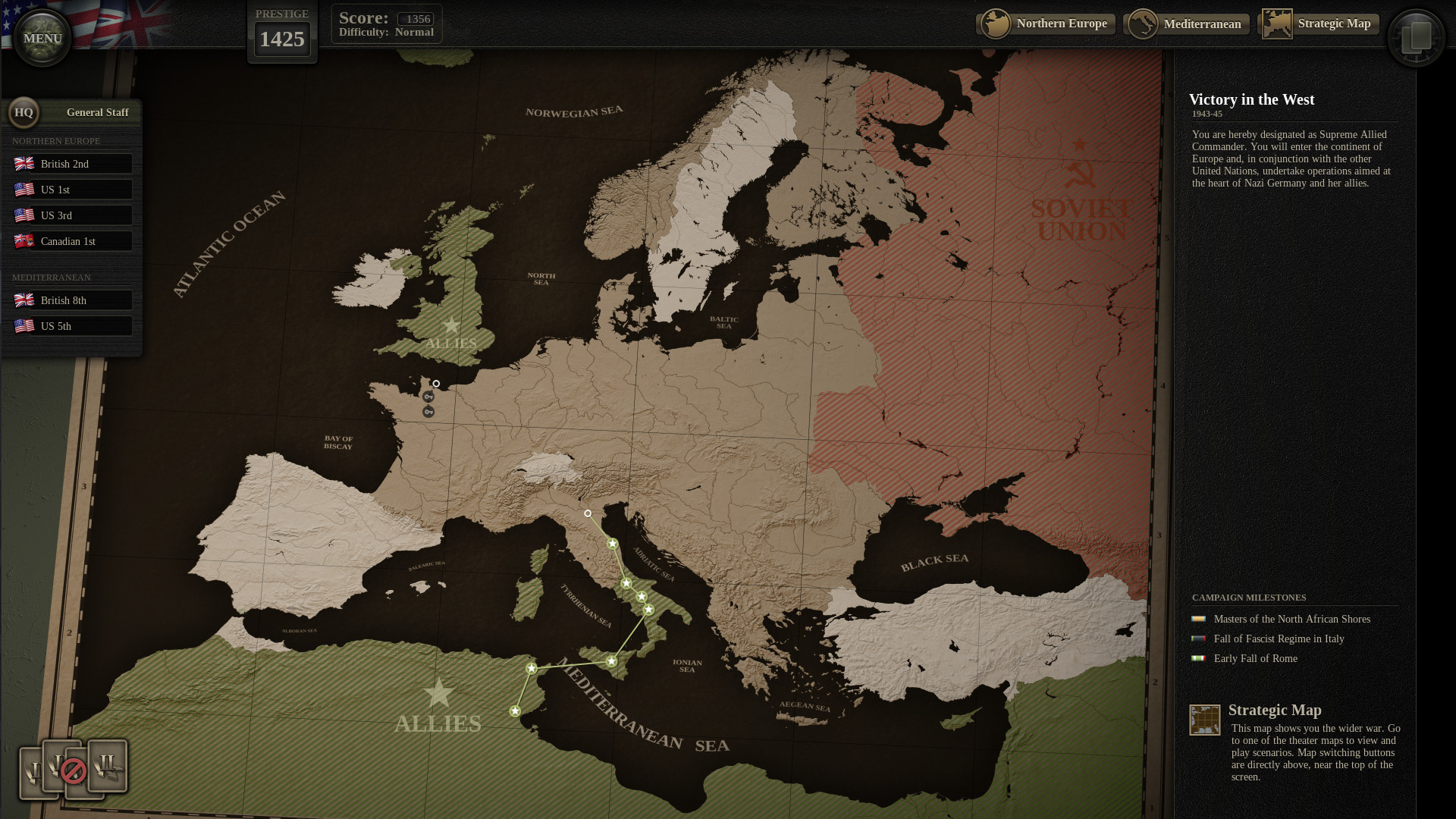
“It is forbidden to kill; therefore all murderers are punished unless they kill in large numbers and to the sound of trumpets.”
― Voltaire
Every game needs a soundtrack fitting of the subject matter and time frame. UOC2 plays safe by going for the tried and trusted orchestral route. Fans of the band of brothers series and classic world war 2 action movies are in for a treat for the ears. I love these kinds of bombastic soundscapes. Strident horn and brass parts echo melodies from the likes of Richard Wagner and Ludwig Van Beethoven. These are underpinned with very detailed percussion parts during the quiet segments, a perfect accompaniment as you ponder your next move. The whole tone of the arrangement is first class. I found myself listening to the main theme outside of the game, which is always a testament to a good soundtrack.

“You can have peace. Or you can have freedom. Don’t ever count on having both at once.”
― Robert A. Heinlein
UOC2 is a deep and engrossing game. It will probably take me months to fully utilize all the systems proficiently. There is an inbuilt tutorial but it only covers the basics over 4 parts. I’d highly recommend viewing Sampstra’s guides on Youtube. She details every part of the GUI and how all the gameplay systems function and interact. There are tooltip mouseovers for most of the interface icons which help in the heat of the battle when you don’t want to read the manual.
Steam workshop support is included in the base game, as well as a scenario editor to create your own missions. Even though the game has only been out for a few days some clever clap has already uploaded a massive scenario entitled ”Invasion Of France (1940)”. This blew me away with the sheer size and scope of the gameplay area. You control the German forces from the northern port town of Emden to the southern Saxony city of Freiberg. A vast frontline encompassing eight armies and countless divisions. This is wargaming on a grand scale and shows the power of the editor in the hands of highly creative folk. This bodes extremely well for the longevity of the game. I can see many more famous battle scenarios being uploaded in the coming months and years. Bravo for the developers for included this feature in the first retail release build.
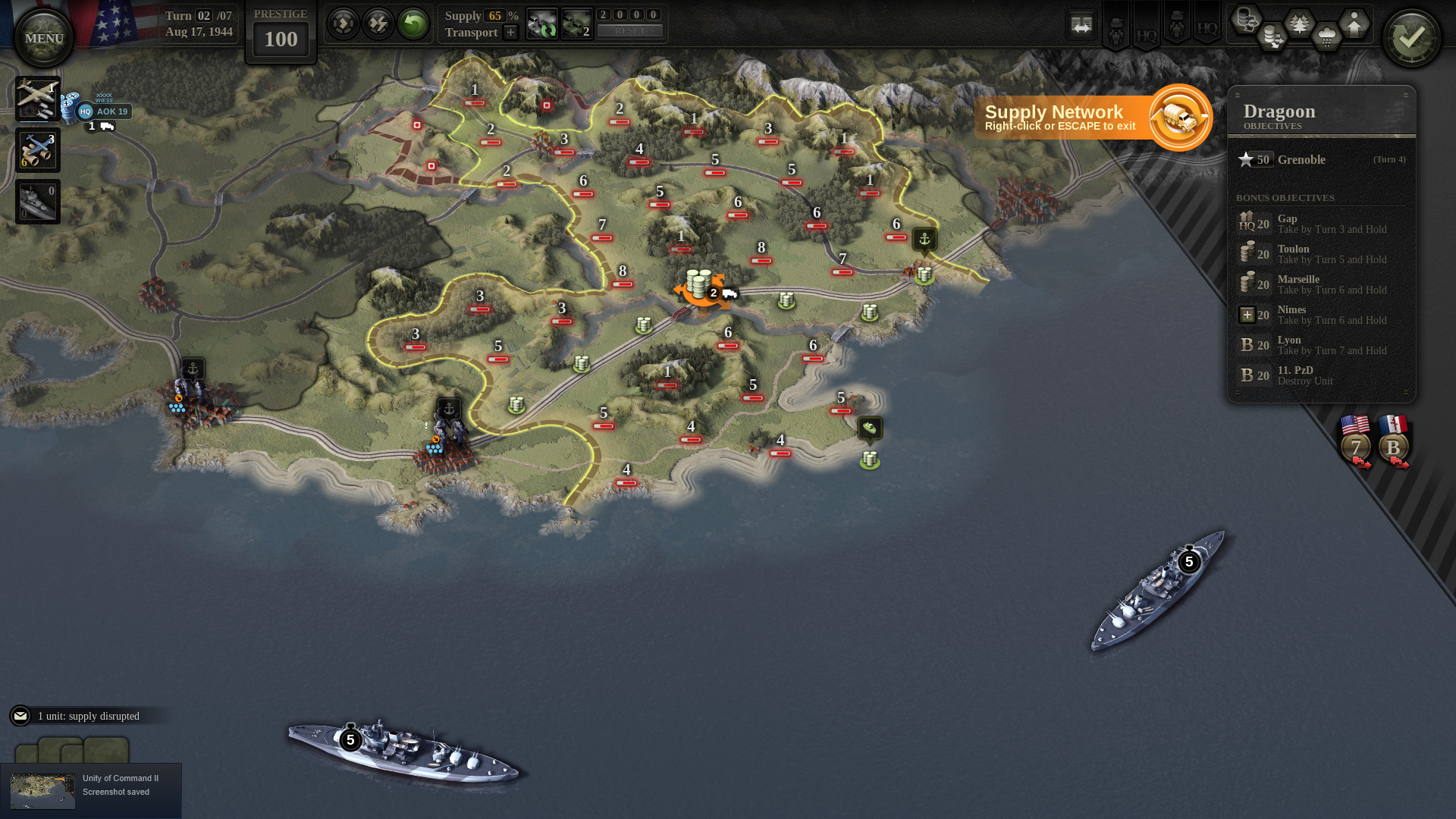
Verdict.
It is very hard to give a definitive review of such a complex title. Like most top tier strategy games such as Panzer General, Crusader Kings and even Civilization, they take a long time to be fully balanced. My review is merely my initial impression over a week or so. Far too short a timeframe to relay a conclusive report. That being said my initial impressions are very positive. 2×2 games have taken their time and build on the solid foundation of the original title. They have also gone the extra mile and created a bespoke 3D engine built specifically for one task. They could have taken the easy option and just used Unity or Unreal, but I feel this would not have yielded such a clean and streamlined experience.
On the whole Unity of Command 2 is a superb wargaming experience. The AI scales well and will provide an excellent challenge for players of all skill levels. There are stacks of content to keep any aspiring commander busy for some time. Add this to the superb Steam workshop integration and you might not need another strategy game for years.

